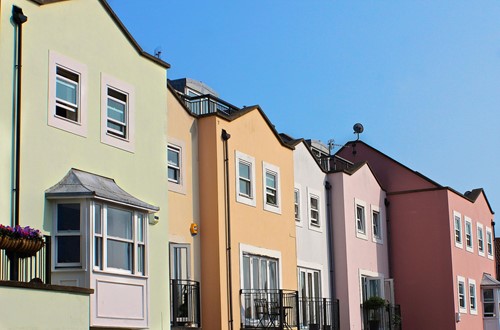
A common sight in historic metropolitan areas, row houses are an iconic example of multifamily housing structures. As their name suggests, row houses are oriented next to one another “in a row” and without a space in between. Each home is separate from the others, but the structure or building often shares a homeowners’ association or similar governing body.
Along with these key factors, there are plenty of characteristics that make row houses special.
Row houses can typically be identified by the following features:
In addition to aesthetic and structural elements, row houses often line entire streets or city blocks. In the United States, you’re likely to find row house neighborhoods in major urban centers with prominent historic districts, such as San Francisco, New York City, Boston and Baltimore.
While following the characteristics listed above, row house construction also falls into some basic architectural style categories. The main architectural styles of row houses include:
Row houses are popular among many homeowners for their historical significance and unique architectural features. Many cities strive to maintain the integrity and appearance of row houses, so residents can continue to enjoy their aesthetic and charm for decades to come.

As a Real Estate Professional my number one goal is to provide exceptional service that leaves my clients happily satisfied. I do this with my commitment to helping you buy or sell your home with the highest level of expertise in your local market. This also means helping you understand each step of the buying or selling process. I do not sell houses, I simply guide my clients through a predetermined series of events to ensure a smooth stress free Real Estate experience. You can count on me to always do what's in your best interest, as I pride myself on being honest, trustworthy, and knowledgeable in the Real Estate market. I understand how important it is to get the best offer for your property, therefore I make it my responsibility to help you achieve these goals. Whether you are buying or selling your primary residence, a second home, investor property, a first time buyer, or just relocating to a new neighborhood, I can help make your home-ownership dreams come true. (First Time Buyer Specialist) (Certified Probate & Trust Specialist)
"A Trusted Name in Sonoma County Real Estate."